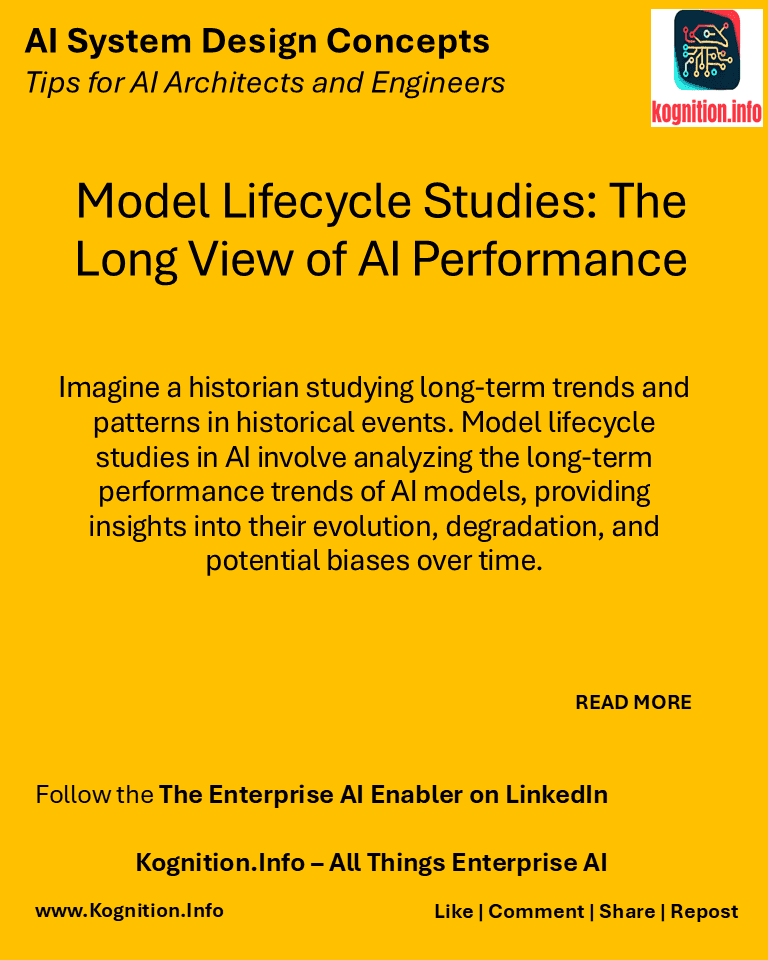
Imagine a historian studying long-term trends and patterns in historical events. Model lifecycle studies in AI involve analyzing the long-term performance trends of AI models, providing insights into their evolution, degradation, and potential biases over time.
Use cases:
- Identifying model decay: Detecting when a model’s performance starts to decline due to changes in data or the environment.
- Understanding bias evolution: Tracking how biases in model predictions may change over time.
- Predicting future performance: Forecasting the long-term performance trajectory of AI models to anticipate maintenance needs or updates.
How?
- Collect longitudinal data: Gather data on model performance, data characteristics, and user feedback over an extended period.
- Visualize performance trends: Use charts and graphs to visualize how model performance changes over time.
- Analyze influencing factors: Identify factors that contribute to performance changes, such as data drift, model updates, or external events.
- Develop predictive models: Build models to predict future performance trends and identify potential issues.
Benefits:
- Proactive maintenance: Anticipate model degradation and plan for retraining or updates.
- Bias mitigation: Detect and address biases that may emerge or evolve over time.
- Improved understanding: Gain a deeper understanding of the long-term behavior and limitations of AI models.
Potential pitfalls:
- Data requirements: Conducting model lifecycle studies requires collecting and storing data over a long period.
- Analysis complexity: Analyzing long-term trends and identifying influencing factors can be complex.
- Limited predictability: Predicting future model performance can be challenging due to unforeseen factors and changes in the environment.
